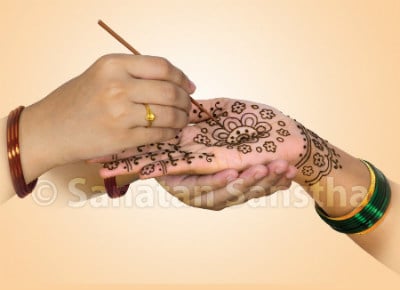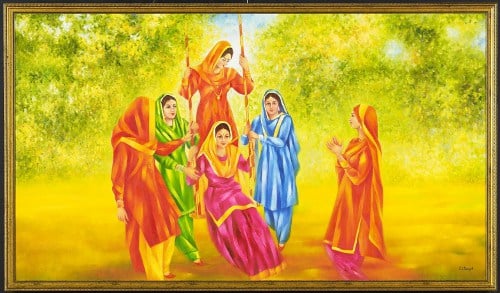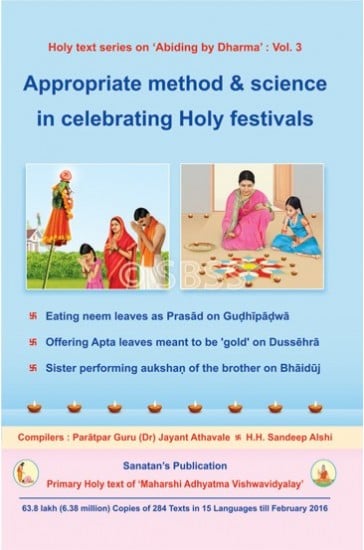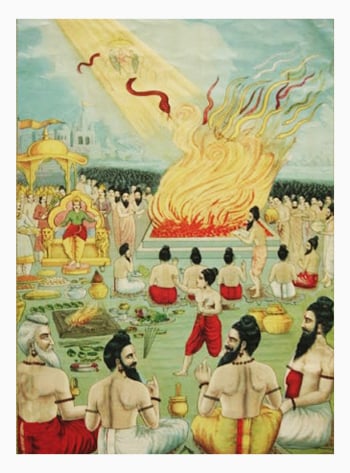Nag Panchami (2024 date and observances)
Nag Panchami is the first festival that we welcome in the auspicious month of Shravan. Nag Panchami, as the name suggests, is celebrated on Shravan Shukla Panchami (Monday, 09 August, 2024), the fifth day of the bright fortnight of the Hindu lunar month of Shravan. Women observe a fast, wear new clothes, don jewellery, and offer puja to Nag devata (Snake God) for the health and success of their brother. It is believed that ritualistic worship on this day destroys any fear of snakes and snake-bites. Here we delve into the importance of Nag Panchami, the history, do’s and don’ts here.
Nag Panchami – Do’s
The History of Nag Panchami
1. The day on which the Sarpayajna was stopped : King Janmejay who performed sarpyajna (Sacrificial fire of snakes) was appeased by Sage Astik. When Janmejay told Him to ask for a boon, Sage Astik asked for the cessation of the sarpyajna. The day on which Janmejay stopped sarpyajna was Shravan Shukla paksha Panchami.
2. Kaliyamardan day : The day Shri Krishna subdued and forced the venomous serpent Kaliya and his family to leave the Holy river Yamuna, was Shravan Shukla paksha Panchami.
3. Five yugas ago there was an minor Goddess named Satyeshwari. Satyeshwar was Her brother, who died on the eve of Nag Panchami. A grieving Satyeshwari then saw Her brother in the form of a cobra on the day of Nag Panchami. At that instant She believed that the cobra was Her brother. At that time Nag devata promised Her that He would protect any woman who would worship Him as Her brother. Hence, on that day every woman celebrates Nag Panchami by worshipping the cobra.
4. Cobras have been associated with the various incarnations of God. Vasuki assisted Shri Vishnu’s Kurma (tortoise) incarnation with the samudra manthan (churning of the celestial ocean). Shri Vishnu reclines on Sheshnag. When Shri Vishnu incarnated as Shri Ram, Sheshnag incarnated as His brother Lakshman. Bhagwan Shiva adorns 9 cobras.
5. Bhagwan Shiva ingested the halahal poison that emerged from the samudra manthan. 9 types of snakes then rushed to help Him. A pleased Shiva then blessed the snakes that mankind would remain eternally grateful and worship snakes for their contribution in saving creation from the all consuming halahal poison. So mankind has worshipped snakes to express gratitude. The Navanag comprise of the nine major groups of pavitraks. Pavitraks are the subtlemost Divine particles.
Ritualistic worship on Nag Panchami
On this day, an image of a five-hooded cobra is drawn with turmeric or that of Navanag are drawn with raktachandan (Red sandalwood) on a wooden seat. Local customs also include worshipping snake idols of stone or mud. Nine cobras – Anant, Vasuki, Shesh, Padmanabh, Kambal, Shankhapal, Dhritarashtra, Takshak and Kaliya are invoked and they are offered sandalwood paste, akshata (Unbroken rice grains coated in vermilion), and flowers. Family members may offer flowers, durva, parched rice, green gram, etc.
Nag Panchami – Don’ts
Chopping, cutting, frying, stitching, digging are forbidden on the day of Nag Panchami. There are no restrictions on performing these actions on other days of the year.
In earlier times, the people would roast or boil root vegetables and consume them. They would not chop or fry them. So the amount of sin incurred was also less. Since it is difficult to follow all the olden practices in Kaliyuga, it is necessary to perform every action as Sadhana to nullify the sin that is incurred. The best way to do this is to chant while performing every action.
Importance of Fasting on Nag Panchami

A grieving Satyeshwari stopped eating when her brother died. So women fast for the wellbeing of their brothers. Sisters pray ardently for their brothers to obtain a long life, various weapons, and protection from all obstacles and dangers. So this ardent prayer benefits the brother and he is protected.
Reason for applying mehendi, wearing new clothes and ornaments

Satyeshwar stood in front of Satyeshwari in the form of Nag Devata. Feeling that he would leave, Satyeshwari made him promise and a mark of the promise appeared on Her hands. As a representation of that promise, on the day before Nag Panchami women apply mehendi on their hands.
Nag devata was moved with Satyeshwari’s grief for Her brother. So to reduce Her grief, He gave Her new clothes to wear and decorated Her with various ornaments. Hence, on that day women wear new clothes and ornaments.
Importance of sitting on a swing on Nag Panchami

The next day, Satyeshwari did not see Nag devta. She searched far and wide in the jungle and while doing so climbed trees. Nag devata then appeared as Satyeshwar. A delighted Satyeshwari started swinging on the branches of the trees with joy. So women swing on swings on Nag Panchami.
The sister prays that just as the swing goes higher, her brother should touch the pinnacle of progress, and that all his problems and sorrows should reduce the way the swing comes down. This faith of the sister helps her brother gain 5% spiritual benefit and 30% worldly benefit.
Significance of some actions
Worship of snakes
1. In the Shrimadbhagwadgeeta, Shri Krishna narrates His greatness thus – Among the snakes I am Anant
2. anantaṃ vāsukiṃ śeṣaṃ padmanābhaṃ ca kambalam ।
śaṃkhapālaṃ dhṛtarāṣṭraṃ takṣakaṃ, kāliyaṃ tathā ।।
Meaning: Nine types of serpents – Anant, Vasuki, Shesh, Padmanabh, Kambal, Shankhapal, Dhrutarashtra, Takshak and Kaliya are worshipped. As a result, fear of serpents and poisoning by snakebites is overcome.
3. All living organisms in the world are attuned to the functions of the world. By worshipping cobras on the day of Nagpanchami, God is performing actions through them. This is the broad view to be understood. – Paratpar Guru Parashram Madhav Pande Maharaj, Sanatan Ashram, Devad, Panvel.
4. The principles in snakes are dormant on other days. So the worshipper benefits from the active principles on the day of Nag Panchami.
5. The yellow snake serving as a waistband for Deity Ganapati represents the active universal kundalini. Even in man the kundalini is represented by a coiled snake.
Many of you may be interested in what the kundalini is and how it is activated. To learn about spiritual practice and how it helps with the upward journey of the kundalini, join us in our satsangs. The link is given above…
Worshipping anthills

It is believed that snakes reside in anthills. The physical presence of a snake in the anthill also has subtle effects on the atmosphere. Thus worshipping the anthill benefits the worshipper.
Spiritual significance of snakes

All snakes have originated from Sages Kashyap and Kadru. Bhagwan Shiv is the Lord of all snakes. So most snakes worship Shiva. Some worship Shri Vishnu, and others worship Ganapati.
The cobras can be clubbed in three categories
Tamasik : They are predominantly black in colour and reside in Naglok in Patal (Hell). Superior negative energies use them in subtle wars to poison the enemy. These cobras are million times powerful and thousand times poisonous than cobras on the earth.
Rajasik : These cobras live on the earth. As they are born in the species of cobra their behaviour resembles the average cobra. They are black, bluish, auburn, brown etc. in colour.
Sattvik : These being Divine they reside in Naglok near Shivalok. They are yellowish in colour with a red or blue nagmani on their hood. They are million times powerful than those from Patal, and are adorned by different Deities. Sattvik cobras are within the control of the evolved and Sages and obey their orders. As yellow cobras are worshipers of Superior Deities they possess Divine strength and hence the power to bless, that is function as per resolve.
Spiritual significance of snakes

All snakes have originated from Sages Kashyap and Kadru. Bhagwan Shiv is the Lord of all snakes. So most snakes worship Shiva. Some worship Shri Vishnu, and others worship Ganapati.
Types of cobras
The cobras can be clubbed in three categories
Tamasik : They are predominantly black in colour and reside in Naglok in Patal (Hell). Superior negative energies use them in subtle wars to poison the enemy. These cobras are million times powerful and thousand times poisonous than cobras on the earth.
Rajasik : These cobras live on the earth. As they are born in the species of cobra their behaviour resembles the average cobra. They are black, bluish, auburn, brown etc. in colour.
Sattvik : These being Divine they reside in Naglok near Shivalok. They are yellowish in colour with a red or blue nagmani on their hood. They are million times powerful than those from Patal, and are adorned by different Deities. Sattvik cobras are within the control of the evolved and Sages and obey their orders. As yellow cobras are worshipers of Superior Deities they possess Divine strength and hence the power to bless, that is function as per resolve.
Divine status
1. Nag devata is identified as a minor Deity.
2. In certain places Nag devata also function as the presiding Deity of that place.
3. The Nag devata resides below large peepul or banyan trees, or in anthills.
4. Sateri Devi is believed to reside in anthills. So cobras live in the anthills to serve Her.
Deceased ancestors & cobras
Deceased ancestors trapped in the nether region and pitrulok (region of ancestors) mostly appear before their descendants in the form of black cobras. Sattvik ancestors however appear as yellow cobras and bestow blessings.
Ancestors having intense attachment for the home, wealth and family take rebirth on the earth as cobras. Ancestors with a benevolent temperament and engrossed in Divine tasks, reside in pitrulok for some time and later live in the Divine Naglok close to Shivalok, as yellow cobras.
Kaliyug and snake menace
Till the commencement of the Kaliyug Deities had their independent places e.g. Deity of a place, village Deity, protector Deity of the borders etc. In the same way every village had forests with densely populated trees with snake nests at the base. All cobras from the village lived there. As they were allotted their own space they did not trouble man instead protected him and his assets. In this scientific age for the sake of material development man destroyed these spots in villages and converted them into concrete jungles. That is why man has to face the wrath of the cobra. – Ms. Madhura Bhosale (knowledge received in the subtle)
Reference Text
This information has been extracted from the following text published by Sanatan. Get your copy today for more information on Nag Panchami and other festivals.

Video about Nag Panchami





